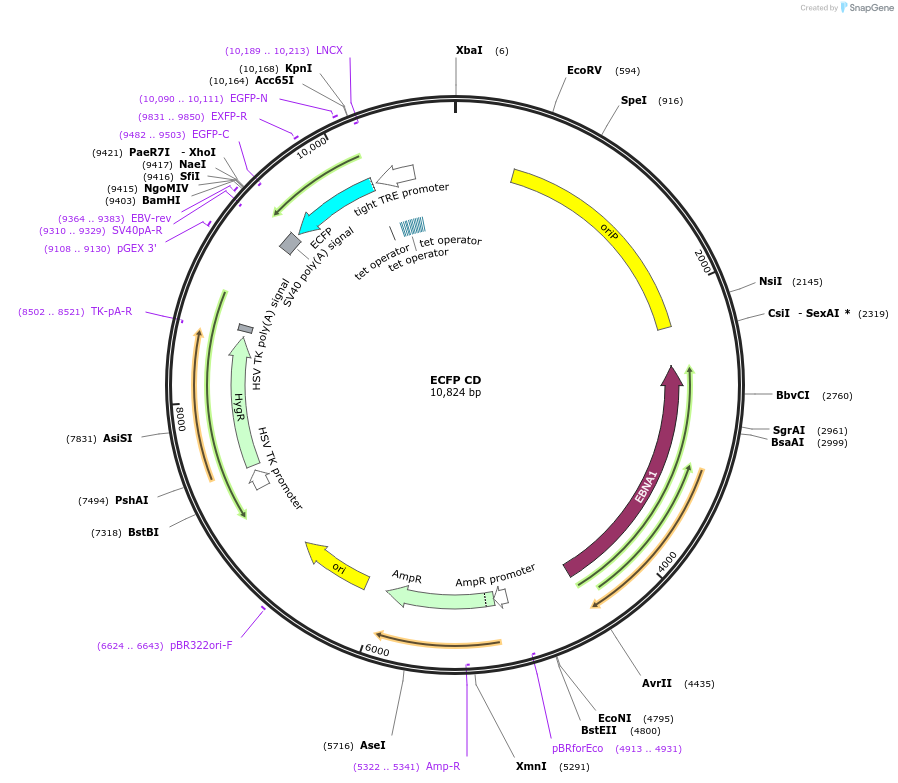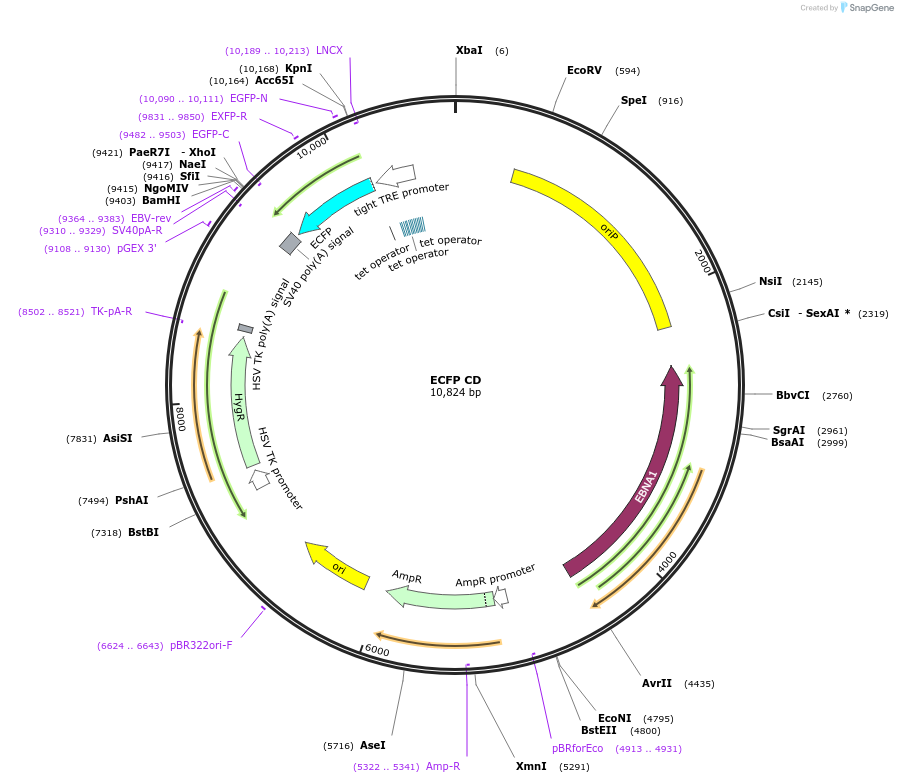ECFP CD
(Plasmid
#207414)
-
PurposeMammalian-cell-based plasmid system that expresses ECFP (a non R-loop-forming transcript) upon dox-induction, which will further cause co-directional transcription-replication conflict (CD TRC).
-
Depositing Lab
-
Sequence Information
Ordering
| Item | Catalog # | Description | Quantity | Price (USD) | |
|---|---|---|---|---|---|
| Plasmid | 207414 | Standard format: Plasmid sent in bacteria as agar stab | 1 | $89 | |
Backbone
-
Vector backbonepCEP4 Mammalian Expression Vector
-
Backbone manufacturerThermo Fisher
- Backbone size w/o insert (bp) 10400
- Total vector size (bp) 10822
-
Modifications to backbone1) Replacement of pCMV with tight-Tet-ON promoter; 2) Switching orientation of tight-Tet-ON promoter by SalI restriction enzyme digestion and religation; 3) Cloning of ECFP or mAIRN sequence downstream of tight-Tet-ON promoter
-
Vector typeMammalian Expression, Bacterial Expression
-
Selectable markersHygromycin
Growth in Bacteria
-
Bacterial Resistance(s)Ampicillin, 100 μg/mL
-
Growth Temperature37°C
-
Growth Strain(s)DH5alpha
-
Copy numberUnknown
Gene/Insert
-
Gene/Insert nameECFP
-
SpeciesSynthetic; Aequorea victoria
-
Insert Size (bp)717
Resource Information
-
Supplemental Documents
Terms and Licenses
-
Academic/Nonprofit Terms
-
Industry Terms
- Not Available to Industry
Trademarks:
- Zeocin® is an InvivoGen trademark.
Depositor Comments
Please Note: Addgene NGS is not able to fully resolve the EBNA1 feature within the plasmid due to the repetitive nature of the sequence. Please refer to the depositor's expected sequence for this region of the plasmid.
These plasmids were created by your colleagues. Please acknowledge the Principal Investigator, cite the article in which the plasmids were described, and include Addgene in the Materials and Methods of your future publications.
-
For your Materials & Methods section:
ECFP CD was a gift from Karlene Cimprich (Addgene plasmid # 207414 ; http://n2t.net/addgene:207414 ; RRID:Addgene_207414) -
For your References section:
Transcription-Replication Conflict Orientation Modulates R-Loop Levels and Activates Distinct DNA Damage Responses. Hamperl S, Bocek MJ, Saldivar JC, Swigut T, Cimprich KA. Cell. 2017 Aug 10;170(4):774-786.e19. doi: 10.1016/j.cell.2017.07.043. 10.1016/j.cell.2017.07.043 PubMed 28802045








